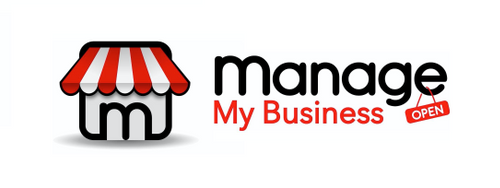Know Your Numbers: 5 Keys to Small Business Success

The phrase “Know Your Numbers” typically refers to measuring your personal health by knowing your blood pressure, weight, cholesterol levels, etc. You and your doctor can use these numbers to make sure you’re healthy and identify early indicators of potential issues.
The same concept applies to your small business. Some small business owners consider their business to be a success if their bank account is growing – or at least not shrinking. But that’s the equivalent of saying you’re healthy because you feel good today. Just like for your health, there are key metrics that will help you better understand your business and uncover opportunities and potential issues.
#1: Start Simply
You do not need to become a data scientist to make sense of small business metrics. But it is easy to get overwhelmed. So start simply and build from there.
Find a performance dashboard you like, such as the one provided by your point-of-sale system. In this Best Practices for Small Business Success series, we’ll use examples from the Manage My Business app because it is specifically designed to help small business optimize their results. But use whatever you’re comfortable with.
You already know your sales numbers, so start by looking at this metric from different perspectives. For example, a "heatmap" graph is an excellent way to visualize your sales by the time of the day as well as the day of the week. In the following example, it’s easy to see the busiest day is Saturday and the slowest hour is 4-5pm on weekdays – perhaps indicating the need to close an hour earlier on weekdays.
Similarly, sales trend graphs often provide great insights, especially when viewed from different perspectives. This next example shows sales on Wednesdays are declining slightly over time, which could indicate a normal seasonal trend or a potential issue to investigate further.
The key is to start by looking at a few key metrics (like Sales and Order Size) to avoid getting overwhelmed and frustrated, and then expand from there as you become more comfortable with your data.
#2: Only Use Apples-to-Apples Comparisons
Comparing today’s results to those a month ago can be useful as long as “month” is defined as “four weeks ago”. This is because the day of the week influences sales for almost every business. So comparing April 30 (a Saturday) to March 30 (a Wednesday) is typically not useful, but comparing April 30 to April 2 (both Saturdays) can be very useful in measuring growth.
The same concept applies to holidays, where Mother’s Day is May 8 in 2022 but May 14 in 2023. Holidays that are on the same date every year (Christmas, Juneteenth, etc.) are exceptions, where it may be useful to compare the same date year-over-year.
A similar issue comes up for intraday comparisons. It doesn’t make sense to compare results as of noon today to the entire day of sales yesterday. However, a comparison of sales as of noon today to sales as of noon yesterday can be very insightful.
Oddly enough, most dashboards do not make it easy to make apples-to-apples comparisons. The Manage My Business app is perhaps the only app available to small businesses that is built to ensure apples-to-apples comparisons – including understanding holidays, as shown in this example:
#3: Keep Everything in Context
It’s easy to misinterpret or misuse data, especially when it’s taken out of context. You know your business well, so make sure all metrics are interpreted within the context of your business.
Let's consider the first example above where 4-5pm on weekdays is the slowest hour. Perhaps this is good because it allows your employees to start pre-closing work and leave a little earlier – reducing payroll costs while still offering convenient store hours for your customers. Or perhaps it would be better to close earlier. Putting the data in context will ensure you make good data-driven decisions.
Keep external influences in mind as well. For example, COVID-19 caused Order Size to increase for many small businesses as consumers bought larger quantities to reduce the number of trips outside the home. The Order Size then declined as life slowly returned to normal. A decline in this key metric is usually a negative indicator, but this external factor explains why it might not be a cause for concern in this situation.
Similarly, a major retailer of cribs saw a sudden drop in their crib sales some years ago and didn’t know what to do. Based on data from a market research firm, they discovered crib sales were down for all retailers, not just them. This market context prevented them from making a bad business decision (heavy discounting or discontinuing crib sales). Crib sales returned to normal within the next six months.
#4: Keep Asking “Why?”
Analytics are only useful if you can identify why something happened and apply that insight to improve future performance. Understanding why crib sales dropped (an unusual, short-term drop in demand) allowed that retailer to make informed decisions about its future. Not understanding why could have led to disastrous results.
As you’re looking at your performance data, keep asking yourself why something happened – regardless of whether it was a positive or negative change. Negative results tend to draw our attention, but there’s a lot to be learned about why performance improved as well.
For example, price changes can obviously affect sales. In the graphs below, it’s not clear why cappuccino sales (as a percentage of total sales) were flat or trending slightly up after the price increase while latte sales were trending down. Perhaps one was still favorably priced compared to competitors while the other became overpriced. Digging deeper into the “why” will help determine if additional price adjustments are needed.
It's a never-ending process, but that’s part of the fun of owning a small business. It’s a series of challenges that push you to find new and innovative ways to create great products and customer experiences. Continually asking “Why?” will often identify new ways to make your small business special.
#5: Trust Your (Informed) Gut
Most small business owners don’t have a business degree, but they do have an intense passion for what they’re selling – whether it’s coffee or antiques or fashion or whatever motivated them to start their business. As a result, you are a subject matter expert for your business and will have good instincts for how to run it.
Analytics complement your expertise by providing insights that may not be obvious from just observing the day-to-day business. Going overboard with analytics is just as bad as ignoring analytics. It’s the balance between expertise, instinct and data-driven decisions that will be the key to your business’s success.

Steven Roth is the creator of the Manage My Business app and best practices guides. He is passionate about helping "mom-and-pop" stores make better data-driven decisions by making analytics accessible and actionable.
Steven has been a retail consultant for 20+ years, including several years at Google. He is an expert in retail analytics and has helped build tools and services used by millions of retailers worldwide. He currently owns two small businesses, giving him firsthand knowledge of the challenges small businesses face daily.
Next Steps
Get to know your numbers by finding a dashboard that supports your business needs. Big retailers have teams of data scientists that do this analysis, but a data-focused mindset along with your existing expertise and instincts can give your small business a big edge.

